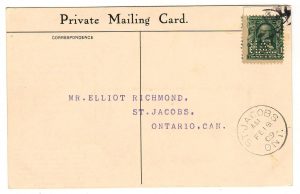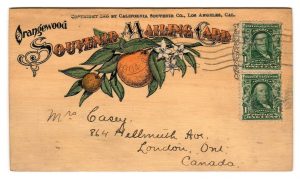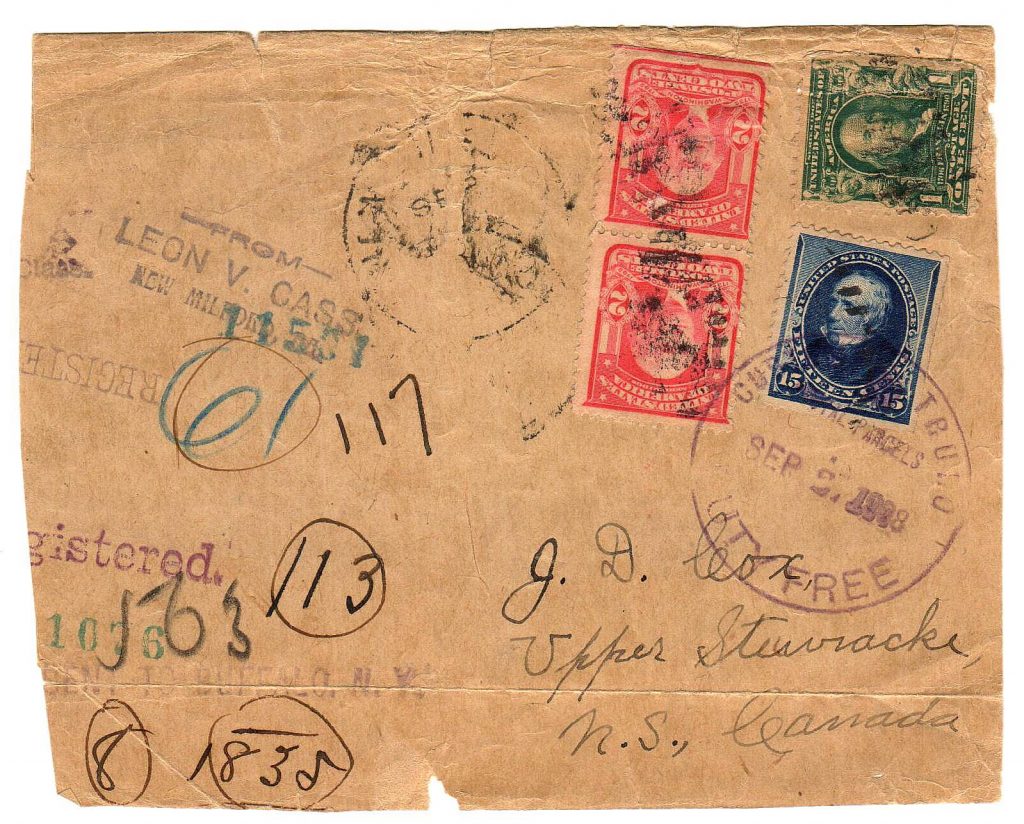In 1885 the United States and Canada entered into a postal treaty that provided domestic rates for most types of mail. The treaty remained in effect throughout the 2nd Bureau era of postage stamps. Shown below are a variety of uses for Canada.
1st Class Mail
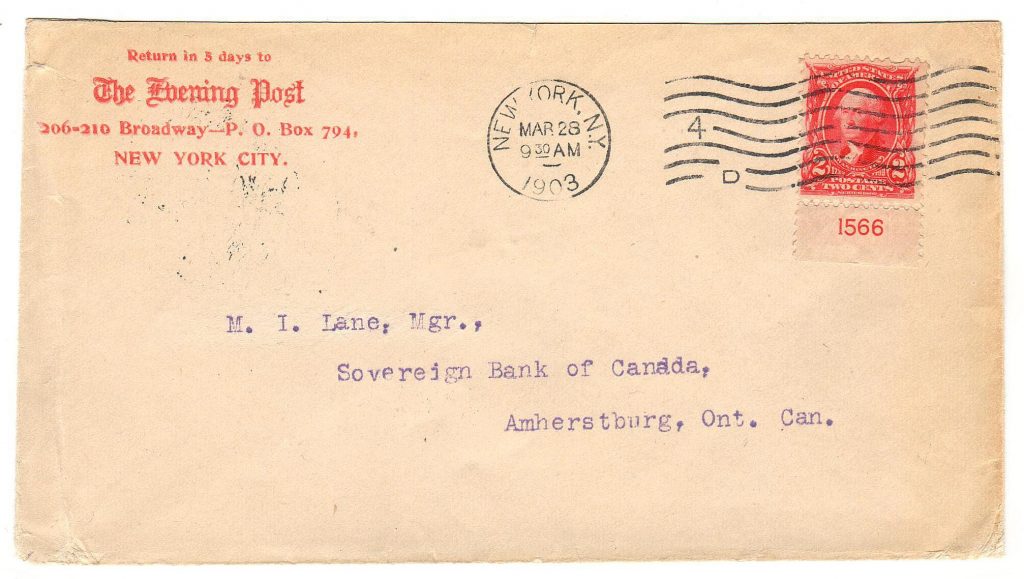
New York City Evening Post corner card advertising envelope sent at the first-class 2-cents treaty rate to Canada instead of the 5-cents international rate for saving 3-cents. The Washington stamp has the 1566 plate number selvage still attached.
Registered 1st Class Mail
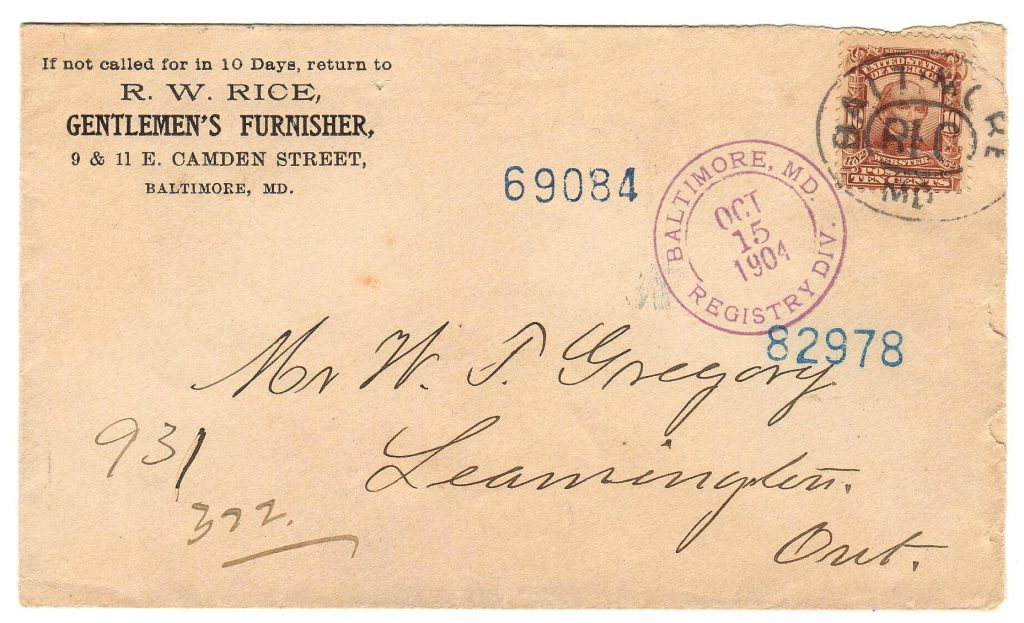
The ten-cents Webster stamp paid the eight-cents registry fee plus the 2-cents letter rate. Registered mail between the U.S. and Canada did not require registry exchange labels.
Postcard Rate
3rd Class Mail Rate
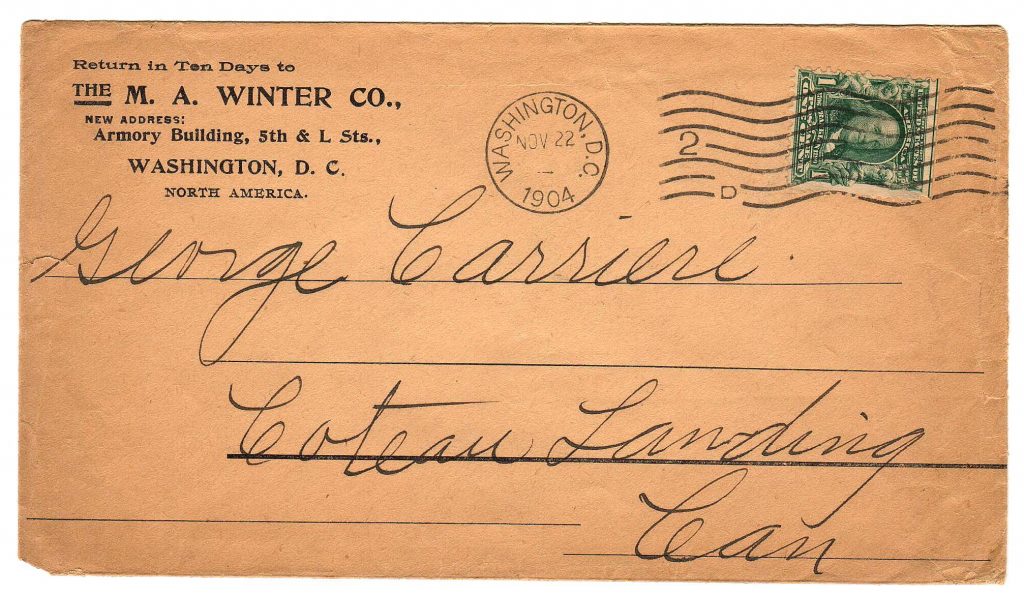
The U.S./Canada 3rd class mail treaty rate was equivalent to the domestic rate of 1-cent per two ounces.
4th Class Mail (Samples or Merchandise)
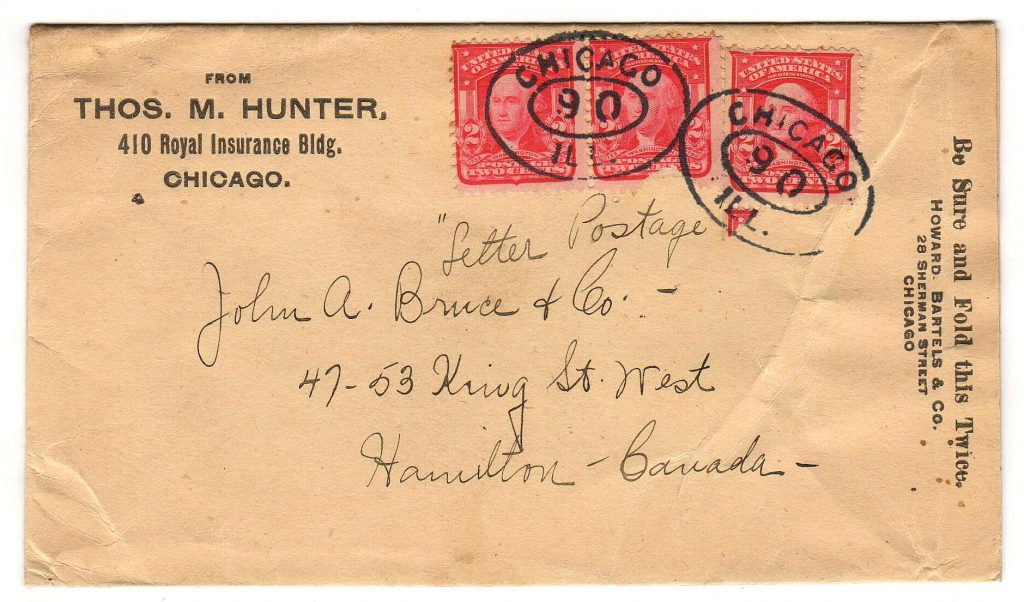
Six cents of postage tied by a dateless postmark (typical of 3rd and 4th class mail). The envelope was sent via the domestic 4th class rate of one cent per ounce for up to six ounces.
Registered 4th Class Mail
